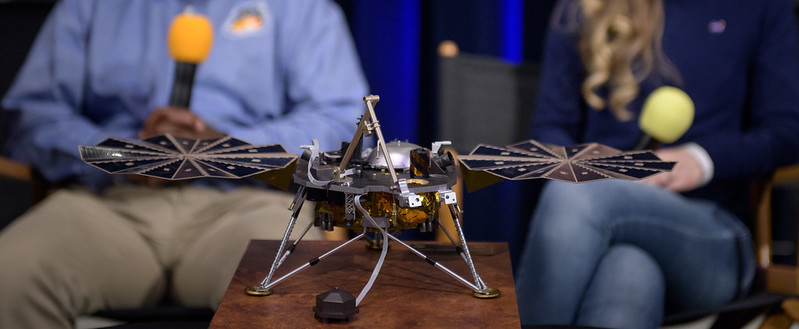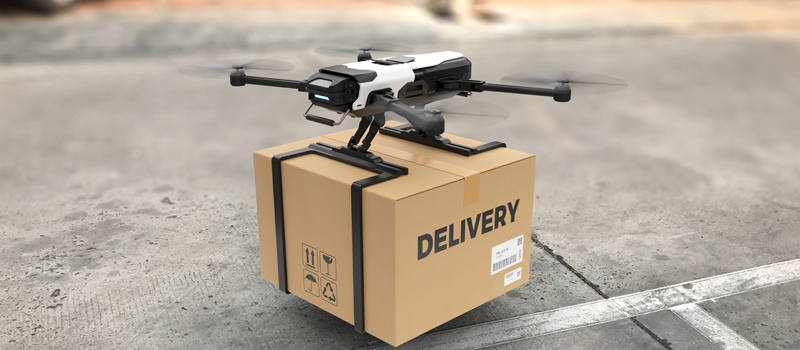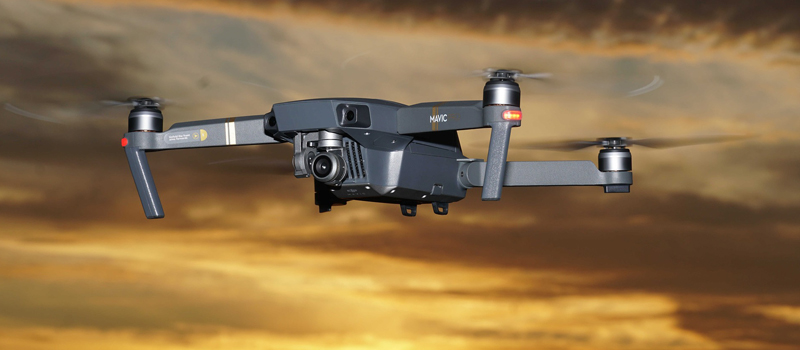The big news today is that NASA has achieved the first powered flight from the surface on Mars with the Ingenuity helicopter. With this development, NASA has paved the way for faster exploration on Mars and other planets.
What is not very apparent is how vast the challenges that had to be overcome before this feat could be achieved. The Ingenuity isn’t just an ordinary drone – it was designed specifically for this mission. What makes drone flight on Mars so difficult and why is the Ingenuity helicopter special? Is there any drone on Earth that can compare to its design?
The challenges of flight in Mars atmosphere
Flight on Mars is difficult because of just one thing – the atmosphere in Mars is a lot thinner compared to that of the Earth. A more useful metric of this is the density of air on Mars, which only about 1% of the density of air on the Earth.
Why is air density such a crucial factor in flight? In rotor-powered flight, the propellers essentially cut through the air and redirect it downwards. This is the mechanism that creates lift. Similarly, shifting the angle of the drone or helicopter gives it the propulsion to move in any direction. The force of this lift is directly proportional to both the speed of rotation of the propellers and the density of the atmosphere.
Another way of framing this challenge is that the atmosphere in Mars is equivalent to the atmosphere on Earth at an altitude of about 22 miles. This is well into the Earth’s stratosphere and more than ten times the allowed altitude for commercial aircraft. Even record-breaking attempts for aircraft on the Earth topped out at only about 85,000 feet.
This heavily implies that there is currently no helicopter on the planet that can handle the lack of atmosphere on Mars. This also meant that the Ingenuity had to be one of a kind.
The story of Ingenuity
The initial phases of the design of the Ingenuity started in 2014. It was meant to be a “scout” unit for the Mars rover that can help identify safe driving routes. Through the years, prototypes of the Ingenuity helicopter were developed and tested on simulated Mars topography.
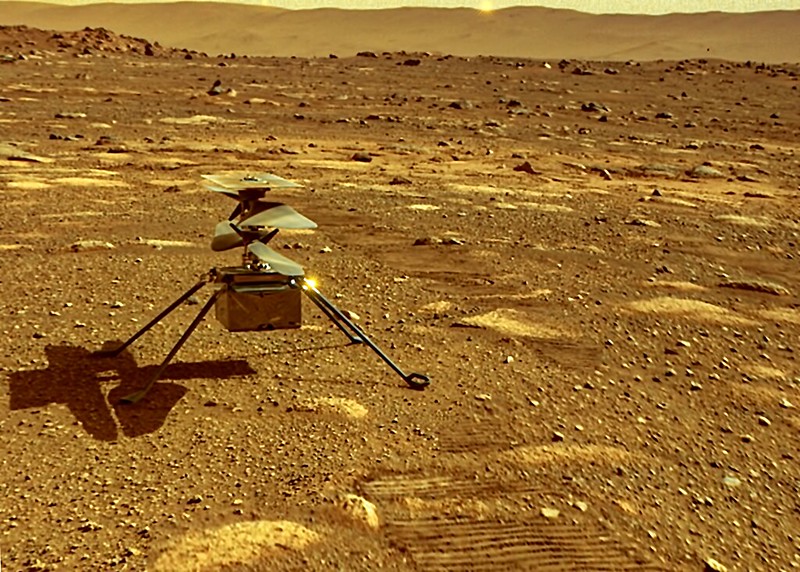
In 2018, the project received $23 million of federal funding, just in time for the helicopter to be deployed for the Mars 2020 mission. After a series of flight tests, it was decided that the helicopter would be mounted on the underbelly of the Perseverance rover. It was only in April 2020 that the helicopter would be officially given the name “Ingenuity” – or “Ginny” for short.
More than anything, the Ingenuity was meant to be a tech demonstration. Using the data and performance of the Ingenuity, the scientists at NASA can then proceed to make more sophisticated versions of the helicopter that can fulfill the actual purpose of being a scout drone.
On April 19, 2021, the Ingenuity successfully made its first flight. The short flight only consisted of taking off, lifting to an altitude of ten feet, hovering for almost 40 seconds, and landing. Footage from the flight was then received about three hours later.
Ingenuity design elements
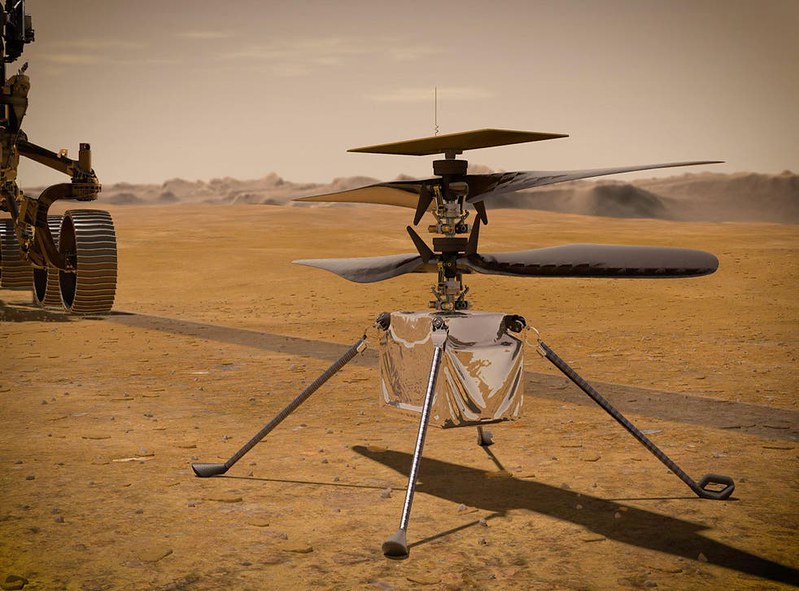
With many years of development, there are probably details on the design of the Ingenuity that we cannot cover here. Instead, we’ll focus on the design elements that address the unique challenges of flight on Mars.
Lift
One of the main challenges that the team had to tackle was how the propellers can generate lift despite the thin atmosphere of Mars. Given the density of air, the drone had to have very powerful propellers.
The propellers of Ingenuity were designed to hit a maximum speed of 2200 rpm. To put that into context, our usual helicopters has propellers that rotate at 500 rpm. This was a very powerful (and noisy) drone. Moreover, the propellers had to be bigger and stiffer than the propellers of drones that were typically used on our planet.
In contrast to the usual quadcopters, the Ingenuity only had two propellers that rotated in opposing directions. This was a design necessity because of the requirement for a propeller with a large diameter.
However, there was also an upper limit to the speed at which the propellers can rotate. The team had to ensure that the propellers will not break the sound barrier. This can create sonic booms which will almost certainly disrupt the drone’s aerodynamics. At 2200 rpm, this speed was only about 70% of the speed of sound.
Weight
Flying in Mars provided one major advantage to the Ingenuity- the gravity in Mars was only about 38% that of the Earth. This gave the designers some leeway in determining the weight of the drone. However, it was still in their best interest to keep the drone as light as possible.
Through the use of lightweight materials, the weight of the Ingenuity drone clocked in at slightly less than 1.8 kilograms. These materials included a landing gear made of carbon fiber legs and propellers coated with carbon fiber and had foam cores. The main fuselage of the drone contained its internal circuity and battery with internal insulation of CO2 gas.
Control
Another challenge for the Ingenuity was how it was going to be controlled during flight. The radio signals that we typically use to fly drones on Earth were simply too slow for the Ingenuity. To put that into context, it would take between 20 to 30 minutes for radio signals to travel from the Earth to Mars. This made it impossible for the Ingenuity to be piloted by a human pilot.
This meant that the Ingenuity had to be able to fly completely autonomously. To do this, the drone had an entire suite of sensors including gyroscopes, altimeters, accelerometers, and a camera. This gave the drone a sense of its position and orientation, as well as an approximation of the topography surrounding it.
Power
The primary method of recharging the batteries of the Ingenuity is an array of solar panels on top of its propellers. The drone has been outfitted with a set of lithium-ion batteries with a total capacity of 35 to 40 Watt-hour batteries. Charging the batteries to full capacity took an entire day.
Surprisingly, the batteries of the Ingenuity only allowed it to fly up to 90 seconds at a time. This is because a significant portion of the power output – about 2/3 – goes towards keeping its batteries and internal circuitry warm. This brings us to one of the major challenges of keeping an electronic device functioning on Mars – the fact that temperatures can go as low as -100 C at night.
To help keep the drone’s electronics warm, its fuselage is insulated with CO2 gas. Not only does the gas minimize heat loss, but it also provides insulation without adding significant weight to the drone.
Durability
There is one major consideration when designing just how tough the drone should be. While the flight conditions in Mars aren’t necessarily mechanically demanding, it should be able to endure the rigors of the space shuttle launch process. Components in the shuttle can experience up to 80 Gs of pressure and vibration during launch, so this is something that the design team had to dedicate significant effort to.
Moving forward with the Ingenuity drone
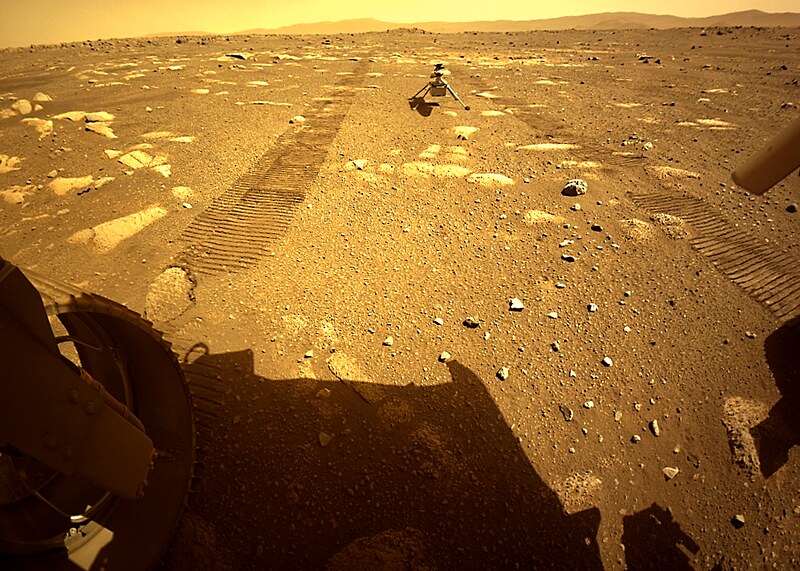
With the tech demonstration of the Ingenuity highly successful, the team at NASA can proceed to use the collected data for future iterations. The goal is to create a drone that can operate at higher weights and possibly carry a payload. The ultimate objective is for the drone to collect soil, water, and brine samples from Mars that can then be returned to Earth for analysis.
Final thoughts
Taking a deep dive into the Ingenuity drone might be a slight departure from our usual topics in Pilot Institute, but many drone enthusiasts are understandably excited with this news. It’s very interesting to look into the design process and understand how drone flight on Mars is vastly different from what we do on our home planet.
What we deem more interesting is how the learnings from the Ingenuity design process can make their way to drones from commercial brands. The propeller, battery, and sensor technology of the Ingenuity can certainly prove useful even in our more “terrestrial” setting.
